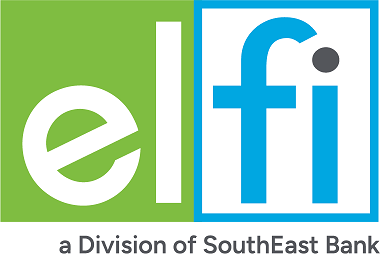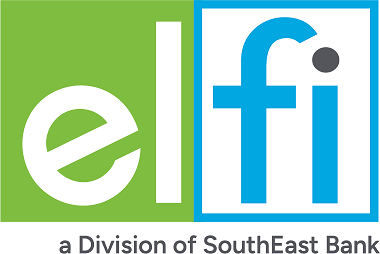Summary: There’s a lot that goes on behind the scenes as colleges decide who to admit each year. One factor that might play a role is your family’s financial situation. This article breaks down the difference between need-blind and need-sensitive admissions and highlights what you should know about each approach.
You’ve probably been told how important your grades, test scores, volunteer work, and essays are when it comes to getting into college. But here’s something you might not have considered—your family’s financial situation could also play a role in the admissions process.
What Does Need-Blind Mean?
When it comes to your family's financial status, remember that you can't change it. So, there's no need to worry. Let's shift our focus to what the admissions office evaluates during the application process.
A college is labeled need-blind if it doesn't assess a family's finances when admitting a student. This translates to not reviewing your FAFSA or requesting financial details during the decision-making phase. Conversely, if a college is need-sensitive or need-aware, they do consider your financial situation in admission decisions.
Benefits of Attending a Need-Blind School
Here’s the potential good news about need-blind schools: Need-blind schools often provide significant financial aid to students with “demonstrated financial need,” as determined by the FAFSA and other financial aid applications. (Some of them even meet 100% of “demonstrated financial need,” which can be a significant bonus if finances are a big part of your college enrollment decision.)
Just remember this: even if a school meets 100% of your “demonstrated financial need,” this doesn’t mean you get to attend for free. It just means that the school has put together a financial aid package that covers 100% of your need. This package could include gift aid (like grants and scholarships), as well as work-study and student loans that you will have to pay back.
There are about 100 colleges that claim to have a need-blind admissions policy. About a third offer need-blind admissions to international students and four-fifths to transfer students.
Check your financial aid award carefully if you’re accepted. About a third of these schools will leave students with unmet need: You might get admitted, but you won’t have the financial aid you need to enroll. (This is called an “admit-deny” situation.)
Best Private Parent Loans for College

Why These Lenders Are Shown?
Edvisors (Edvisors Network, Inc.
) provides independent advertising-supported platforms for consumers to search compare and apply for private student loans.

- Competitive APRs starting at 3.19%1
- Coverage up to 100% of your school-certified cost of attendance ($1,000 minimum) 2
- Apply online in 3 minutes and get an instant credit decision
College Ave's student loan products are made available through Firstrust Bank, member FDIC, First Citizens Community Bank, member FDIC, or M.Y. Safra Bank, FSB, member FDIC. All loans are subject to individual approval and adherence to underwriting guidelines. Program restrictions, other terms, and conditions apply.
1All rates include the auto-pay discount. The 0.25% auto-pay interest rate reduction applies as long as a valid bank account is designated for required monthly payments. If a payment is returned, you will lose this benefit. Variable rates may increase after consummation.
2As certified by your school and less any other financial aid you might receive. Minimum $1,000.
3This informational repayment example uses typical loan terms for a freshman borrower who selects the Flat Repayment Option with an 8-year repayment term, has a $10,000 loan that is disbursed in one disbursement and a 7.78% fixed Annual Percentage Rate (“APR”): 54 monthly payments of $25 while in school, followed by 96 monthly payments of $176.21 while in the repayment period, for a total amount of payments of $18,266.38. Loans will never have a full principal and interest monthly payment of less than $50. Your actual rates and repayment terms may vary.
Information advertised valid as of 06/30/2025. Variable interest rates may increase after consummation. Approved interest rate will depend on creditworthiness of the applicant(s), lowest advertised rates only available to the most creditworthy applicants and require selection of the Flat Repayment Option with the shortest available loan term.

- Choose the #1 Private Student Loan Lender in the Nation. Sallie Mae is trusted by more families than any other private student loan lender.
- Applying online is easy - you could receive a credit result in about 10 minutes.2
Borrow Responsibly
We encourage students and families to start with savings, grants, scholarships, and federal student loans to pay for college. Students and families should evaluate all anticipated monthly loan payments, and how much the student expects to earn in the future, before considering a private student loan.
Explore federal loans and compare to make sure you understand the terms and features. Private student loans that have variable rates can go up over the life of the loan. Federal student loans are required by law to provide a range of flexible repayment options, including, but not limited to, income -based repayment and income-contingent repayment plans, and loan forgiveness and deferment benefits, which other student loans are not required to provide. Federal loans generally have origination fees, but are available to students regardless of income.
Loans for Undergraduate & Career Training Students are not intended for graduate students and are subject to credit approval, identity verification, signed loan documents, and school certification. Student must attend a participating school. Student or cosigner must meet the age of majority in their state of residence. Students who are not U.S. citizens or U.S. permanent residents must reside in the U.S., attend school in the U.S., apply with a creditworthy cosigner (who must be a U.S. citizen or U.S. permanent resident), and provide an unexpired government-issued photo ID. Requested loan amount must be at least $1,000.
1Advertised APRs for undergraduate students assume a $10,000 loan to a student who attends school for 4 years and has no prior Sallie Mae-serviced loans. Interest rates for variable rate loans may increase or decrease over the life of the loan based on changes to the 30-day Average Secured Overnight Financing Rate (SOFR) rounded up to the nearest one-eighth of one percent. Advertised variable rates are the starting range of rates and may vary outside of that range over the life of the loan. Interest is charged starting when funds are sent to the school. With the Fixed and Deferred Repayment Options, the interest rate is higher than with the Interest Repayment Option and Unpaid Interest is added to the loan’s Current Principal at the end of the grace/separation period. To receive a 0.25 percentage point interest rate discount, the borrower or cosigner must enroll in auto debit through Sallie Mae. The discount applies only during active repayment for as long as the Current Amount Due or Designated Amount is successfully withdrawn from the authorized bank account each month. It may be suspended during forbearance or deferment.
2Although we do not charge a penalty or fee if you prepay your loan, any prepayment will be applied as outlined in your promissory note-first to Unpaid Fees and costs, then to Unpaid Interest, and then to Current Principal.
3Based on a comparison of the percentage of students who were approved for any Sallie Mae loan with a cosigner to the percentage of students who were approved without a cosigner from October 1, 2023 to September 30, 2024.
4For applications submitted directly to Sallie Mae, loan amount cannot exceed the cost of attendance less financial aid received, as certified by the school. Applications submitted to Sallie Mae through a partner website will be subject to a lower maximum loan request amount. Miscellaneous personal expenses (such as a laptop) may be included in the cost of attendance for students enrolled at least half-time.
Examples of typical transactions for a $10,000 Smart Option Student Loan with the most common fixed rate, Fixed Repayment Option, two disbursements, a 4-year in-school period, and a 6-month grace: For a borrower with the shortest loan term, it works out to 10.28% fixed APR, 51 payments of $25.00, 119 payments of $182.67 and one payment of $121.71, for a total loan cost of $23,134.44. For a borrower with the longest loan term, it works out to 10.38% fixed APR, 51 payments of $25.00, 179 payments of $150.72 and one payment of $45.51, for a total loan cost of $28,299.39. Loans that are subject to a $50 minimum principal and interest payment amount may receive a loan term that is less than 10 years. A variable APR may increase over the life of the loan. A fixed APR will not.
Information advertised valid as of 06/23/2025.
Edvisors is not the creditor for these loans and is compensated by Sallie Mae for the referral of Sallie Mae loan customers.
SALLIE MAE RESERVES THE RIGHT TO MODIFY OR DISCONTINUE PRODUCTS, SERVICES, AND BENEFITS AT ANY TIME WITHOUT NOTICE.
© 2025 Sallie Mae Bank. Sallie Mae loans are made by Sallie Mae Bank. Sallie Mae, the Sallie Mae logo, and other Sallie Mae names and logos are service marks or registered service marks of Sallie Mae Bank. All other names and logos used are the trademarks or service marks of their respective owners.
SLM Corporation and its subsidiaries, including Sallie Mae Bank, are not sponsored by or agencies of the United States of America. W646400 0325

- Check your eligibility in just 2 minutes
- No fees for origination, disbursement, prepayment, or late payment3
- Skip a payment once per year (once repayment period restarted)4
This information is for graduate and undergraduate students attending Title IV-qualified, not-for-profit, 4-year institutions. Rates offered vary by loan type (undergraduate, graduate, cosigner). Borrowers must be U.S. citizens or U.S. permanent residents if the school is located outside of the United States. Non-U.S. citizen borrowers who reside in the U.S. are eligible with a creditworthy cosigner (who must be a U.S. citizen or U.S. permanent resident) and are required to provide an unexpired government-issued photo ID to verify identity. Applications are subject to a requested minimum loan amount of $1,000. Current credit and other eligibility criteria apply.
Actual rate and available repayment terms will vary based on your financial profile. Fixed annual percentage rates (APR) range from 3.44% to 16.74% (3.19% - 16.49% with auto pay discount). Variable annual percentage rates (APR) range from 5.24% to 17.10% (4.99% - 16.85% with auto pay discount). Earnest variable interest rate student loans are based on a publicly available index, the 30-day Average Secured Overnight Financing Rate (SOFR) published by the Federal Reserve Bank of New York. The variable rate is based on the rate published on the 25th day, or the next business day, of the preceding calendar month, rounded to the nearest hundredth of a percent. The rate will not increase more than once a month, but there is no limit on the amount that the rate could increase at one time. Please note, Earnest Private Student Loans are not available in Nevada. Our lowest rates are only available for our most credit qualified borrowers and requires selection of our shortest term offered (5 years), full principal and interest payment while in school, and enrollment in our .25% auto pay discount from a checking or savings account. Enrolling in autopay is not required as a condition for approval.
1You can take advantage of the Auto Pay interest rate reduction by setting up and maintaining active and automatic ACH withdrawal of your loan payment. The interest rate reduction for Auto Pay will be available only while your loan is enrolled in Auto Pay. Interest rate incentives for utilizing Auto Pay may not be combined with certain private student loan repayment programs that also offer an interest rate reduction. For multi-party loans, only one party may enroll in Auto Pay.
2Nine-month grace period is not available for borrowers who choose our Principal and Interest Repayment plan while in school.
3Earnest does not charge fees for origination, late payments, or prepayments. Florida Stamp Tax: For Florida
residents, Florida documentary stamp tax is required by law, calculated as $0.35 for each $100 (or portion thereof) of the principal loan amount, the amount of which is provided in the Final Disclosure. Lender will add the stamp tax to the principal loan amount. The full amount will be paid directly to the Florida Department of Revenue. Certificate of Registration No. 78-8016373916-1.
4Earnest clients may skip one payment every 12 months. Your first request to skip a payment can be made once you’ve made at least 6 months of consecutive on-time payments, and your loan is in good standing. The interest accrued during the skipped month will result in an increase in your remaining minimum payment. The final payoff date on your loan will be extended by the length of the skipped payment periods. Please be aware that a skipped payment does count toward the forbearance limits. Please note that skipping a payment is not guaranteed and is at Earnest’s discretion. Your monthly payment and total loan cost may increase as a result of postponing your payment and extending your term.
1.) Earnest’s Loan Cost Examples: These examples provide estimates based on principal and interest payments beginning immediately upon loan disbursement. Variable annual percentage rate ("APR"): A $10,000 loan with a 15-year term (180 monthly payments of $152.84) and a 16.85% APR would result in a total estimated payment amount of $27,511.20. For a variable loan, after your starting rate is set, your rate will then vary with the market. Fixed APR: A $10,000 loan with a 15-year term (180 monthly payments of $152.84) and a 16.85% APR would result in a total estimated payment amount of $27,511.20.
2.) These examples provide estimates based on interest only payments while in school. Variable interest rate: A $10,000 loan with a 15-year term (180 monthly payments of $152.84) and a 16.85% interest rate (16.85% APR) would result in a total estimated payment amount of $35,515.14. For a variable loan, after your starting rate is set, your rate will then vary with the market. Fixed interest rate: A $10,000 loan with a 15-year term (180 monthly payments of $152.84) and a 16.85% interest rate (16.85% APR) would result in a total estimated payment amount of $35,515.14. Your actual repayment terms may vary. Other repayment options are available. The calculation assumes that the “in-school” period is 4 years (48 months) and includes our 9 month grace period, during which the monthly payment will be $140.42 for 57 months.
3.) These examples provide estimates based on fixed $25 payments while in school. Variable interest rate: A $10,000 loan with a 15-year term (180 monthly payments of $253.39) and a 16.85% interest rate (14.92% APR) would result in a total estimated payment amount of $47,035.20. For a variable loan, after your starting rate is set, your rate will then vary with the market. Fixed interest rate: A $10,000 loan with a 15-year term (180 monthly payments of $253.39) and a 16.85% interest rate (14.92% APR)would result in a total estimated payment amount of $47,035.20. Your actual repayment terms may vary. Other repayment options are available.The calculation assumes that the “in-school” period is 4 years (48 months) and includes our 9 month grace period, during which the monthly payment will be $25.00.
4.) These examples provide estimates based on deferred payments. Variable interest rate: A $10,000 loan with a 15-year term (180 monthly payments of $275.17) and a 16.85% interest rate (14.67% APR) would result in a total estimated payment amount of $49,530.60. For a variable loan, after your starting rate is set, your rate will then vary with the market. Fixed interest rate: A $10,000 loan with a 15-year term (180 monthly payments of $275.17) and a 16.85% interest rate (14.67% APR) would result in a total estimated payment amount of $49,530.60. Your actual repayment terms may vary. Other repayment options are available. It is important to note that the 0.25% Auto Pay discount is not available while loan payments are deferred. The calculation assumes that the “in-school” period is 4 years (48 months) and includes our 9 month grace period, during which the monthly payment will be $0.
The information provided on this page is updated as of 07/08/2025. Earnest reserves the right to change, pause, or terminate product offerings at any time without notice.
Earnest Private Student Loans are made by One American Bank, Member FDIC, or FinWise Bank, Member FDIC. One American Bank, 515 S. Minnesota Ave, Sioux Falls, SD 57104. Finwise Bank, 756 East Winchester, Suite 100, Murray, UT 84107.
Earnest loans are serviced by Earnest Operations LLC, 300 Frank H. Ogawa Plaza, Suite 340, Oakland 94612. NMLS #1204917, with support from Higher Education Loan Authority of the State of Missouri (MOHELA) (NMLS# 1442770) One American Bank, FinWise Bank, and Earnest LLC and its subsidiaries, including Earnest Operations LLC, are not sponsored by agencies of the United States of America.
© 2025 Earnest LLC. All rights reserved.
THIS IS AN ADVERTISEMENT. YOU ARE NOT REQUIRED TO MAKE ANY PAYMENT OR TAKE ANY OTHER ACTION IN RESPONSE TO THIS OFFER.
- AFFORDABLE fixed rates starting at 3.09% APR with Automatic Debit Discount*
- 1% CASH BACK Graduation Reward*
- COVER UP TO 100% of your tuition and eligible living expenses.
* Ascent’s undergraduate and graduate student loans are funded by Bank of Lake Mills or DR Bank, each Member FDIC. Loan products may not be available in certain jurisdictions. Certain restrictions, limitations, terms and conditions may apply for Ascent's Terms and Conditions please visit: AscentFunding.com/Ts&Cs. Annual Percentage Rates (APRs) displayed above are effective as of 7/1/2025 and reflect an Automatic Payment Discount of 0.25% on credit-based college student loans submitted prior to 6/1/2025, a 0.5% discount for on credit-based college student loans submitted on or after 6/1/2025 and a 1.00% discount on outcomes-based loans when you enroll in automatic payments. Loans subject to individual approval, restrictions and conditions apply. Loan features and information advertised are intended for college student loans and are subject to change at any time. For more information, see repayment examples or review the Ascent Student Loans Terms and Conditions. The final amount approved depends on the borrower’s credit history, verifiable cost of attendance as certified by an eligible school and is subject to credit approval and verification of application information. Lowest interest rates require full principal and interest (Immediate) payments, the shortest loan term, a cosigner, and are only available for our most creditworthy applicants and cosigners with the highest average credit scores. Actual APR offered may be higher or lower than the examples above, based on the amount of time you spend in school and any grace period you have before repayment begins. Variable rates may increase after consummation. 1% Cash Back Graduation Reward subject to terms and conditions. For details on Ascent borrower benefits, visit AscentFunding.com/BorrowerBenefits. Ascent applicants and borrowers that agree to the AscentUP Terms of Service and Privacy Policy, as well as students associated with an Ascent parent loan application, have access to the AscentUP platform.
The minimum amount is $2,001 except for the state of Massachusetts. Minimum loan amount for borrowers with a Massachusetts permanent address is $6,001.

- All online, all easy.
- SoFi private student loans cover up to 100% of school-certified costs.
- No fees required.
- Repay your way with flexible repayment options (find the monthly student loan payment and rate that fits your budget).
- Applying with a cosigner may increase your chances of approval and getting a better rate.*
- Over 1 million students have chosen SoFi.
SoFi Private Student Loan
Undergraduate, Graduate, MBA, Law, Health Interest Rates: Eligibility and Important Details. Fixed rates range from 3.29% APR to 15.99% APR with 0.25% autopay discount. Variable rates range from 4.39% APR to 15.99% APR with a 0.25% autopay discount. Unless required to be lower to comply with applicable law, Variable Interest rates are capped at 17.95%. SoFi rate ranges are current as of 5/21/25 and are subject to change at any time. Your actual rate will be within the range of rates listed above and will depend on the term and type of repayment option you select, evaluation of your creditworthiness, income, presence of a co-signer (if applicable) and a variety of other factors. Lowest rates reserved for the most creditworthy borrowers. Check out our eligibility criteria at https://www.sofi.com/eligibility-criteria/. For the SoFi variable-rate product, the variable interest rate for a given month is derived by adding a margin to the 30-day average SOFR index, published two business days preceding such calendar month, rounded up to the nearest one hundredth of one percent (0.01% or 0.0001). APRs for variable-rate loans may increase after origination if the SOFR index increases. The SoFi 0.25% autopay interest rate reduction requires you to agree to make monthly principal and interest payments by an automatic monthly deduction from a savings or checking account. This benefit will discontinue and be lost for periods in which you do not pay by automatic deduction from a savings or checking account. The benefit lowers your interest rate but does not change the amount of your monthly payment. This benefit is suspended during periods of deferment and forbearance. Autopay is not required to receive a loan from SoFi. SoFi Private Student loans are originated by SoFi Bank, N.A. Member FDIC. NMLS #696891 (www.nmlsconsumeraccess.org).
Parent
Interest Rates: Eligibility and Important Details. Fixed rates range from 5.74% APR to 16.85% APR with a 0.25% autopay discount. Variable rates range from 6.07% APR – 16.85% APR with a 0.25% autopay discount. Unless required to be lower to comply with applicable law, Variable Interest rates are capped at 17.95%. SoFi rate ranges are current as of 5/21/25 and are subject to change at any time. Your actual rate will be within the range of rates listed above and will depend on the term and type of repayment option you select, evaluation of your creditworthiness, income, presence of a co-signer (if applicable) and a variety of other factors. Lowest rates reserved for the most creditworthy borrowers. Check out our eligibility criteria at https://www.sofi.com/eligibility-criteria/. For the SoFi variable-rate product, the variable interest rate for a given month is derived by adding a margin to the 30-day average SOFR index, published two business days preceding such calendar month, rounded up to the nearest one hundredth of one percent (0.01% or 0.0001). APRs for variable-rate loans may increase after origination if the SOFR index increases. The SoFi 0.25% autopay interest rate reduction requires you to agree to make monthly principal and interest payments by an automatic monthly deduction from a savings or checking account. This benefit will discontinue and be lost for periods in which you do not pay by automatic deduction from a savings or checking account. The benefit lowers your interest rate but does not change the amount of your monthly payment. This benefit is suspended during periods of deferment and forbearance. Autopay is not required to receive a loan from SoFi.
Please borrow responsibly. SoFi Private Student loans are not a substitute for federal loans, grants, and work-study programs. We encourage you to evaluate all your federal student aid options before you consider any private loans, including ours. Read our FAQs.
Terms and Conditions Apply. SOFI RESERVES THE RIGHT TO MODIFY OR DISCONTINUE PRODUCTS AND BENEFITS AT ANY TIME WITHOUT NOTICE. SoFi Private Student loans are subject to program terms and restrictions, such as completion of a loan application and self-certification form, verification of application information, the student's at least half-time enrollment in a degree program at a SoFi-participating school, and, if applicable, a co-signer. In addition, borrowers must be U.S. citizens or other eligible status, be residing in the U.S., Puerto Rico, U.S. Virgin Islands, or American Samoa, and must meet SoFi’s underwriting requirements, including verification of sufficient income to support your ability to repay. Minimum loan amount is $1,000. See SoFi.com/eligibility for more information. Lowest rates reserved for the most creditworthy borrowers. SoFi reserves the right to modify eligibility criteria at any time. This information is current as of 6/9/2025 and is subject to change. SoFi Private Student loans are originated by SoFi Bank, N.A. Member FDIC. NMLS #696891. (www.nmlsconsumeraccess.org).

- Prequalification: Prequalify to estimate your rate without affecting your credit score
- Online Application Process: Submit online application in minutes
- Flexible Repayment Options: ELFI offers immediate, interest only, partial payment, and fully deferred repayment options
- No Fees: No application fees, origination fees, or prepayment penalties
- Low Rates: Fixed rates from 3.69% to 14.22% and variable rates from 5.00% - 13.97%*
- Award winning Customer Service: Individually paired Student Loan Advisor to guide you through the application process
*ELFI is a nationwide student loan provider offered by Tennessee based SouthEast Bank. ELFI is designed to assist students financially with receiving their education. Subject to credit approval. See Terms & Conditions. Interest rates current as of 01-01-2025. Variable interest rates may increase after closing but will never exceed 18.00%. Interest rates may also differ from the rates shown above. The term of your loan, financial history, and other factors, including your cosigner’s (if any) financial history can affect the interest rate. For example, a 10-year loan with a fixed rate of 7% would have 120 payments of $11.61 per $1,000 borrowed. Rates are subject to change.
Need-Sensitive Schools
Even if a college is need-blind, that policy can change to need-sensitive when it comes to the wait list. This means that most schools will consider financial status when deciding to admit students on the wait list. (Only five colleges say that they are need-blind for wait-listed students: Amherst, Babson, Bard, Baylor, and Wellesley.)
The potential good news about need-sensitive schools: They might be actively seeking a broad demographic mix of students. They sometimes have specific programs to help low-income students get into school, pay for school, and be successful while in school.
Recommendations
- Almost all families underestimate their eligibility for need-based aid. So, unless your family can flat-out write a check for your tuition (and all the other college expenses!), you should apply for admission and financial aid.
- Find out if the schools you are applying to have need-blind or other need-based admissions policies. Keep these policies in mind as you get those acceptance letters.
- Before you accept admission to a school, make sure it is a good financial fit, not just a good academic fit.














